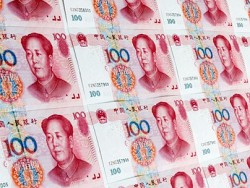
How dangerous debt situation in China? They, without exaggeration, giant. At the end of 2015, the total debt reached 240% of GDP. The debt of private individuals and corporations (200% of GDP) only slightly less than in Japan in 1991 (the period “lost decades”), and much higher than what was in America before the financial crisis of 2007-2008.
Sooner or later China will have to extinguish their debts. Based on past experience, deleveraging process (reducing debt burden) would be painful, not only for the Chinese.
The rapid growth in Chinese debt is a relative new phenomenon. A significant part of it appeared in the period after 2008, when the government actively issued credits to all sectors of the economy for the preservation of old growth, while the rest of the world experienced a sharp slowdown. The biggest debtors are public companies that have enthusiastically responded to the call of authorities to borrow and spend.
Credit fever in China is still ongoing. In January, banks disbursed new loans amounting to $385 billion (3.5% of GDP). On February 29, people’s Bank of China, clearly wanting to support this campaign, reduced the size of the required amount of cash in reserves of financial institutions, resulting in the banks for lending there is an additional $100 billion.
Against this background, the increasingly visible signs of stress. The number of problem loans increased from 1.2% of GDP in December of 2014 to 1.9% of GDP a year later. Many state companies simply do not earn enough money to service its debts; to cover the gap they take new loans.
Sooner or later all they’ll have to drastically cut spending and begin to extinguish debts or banks will have to write them off as losses – with unfortunate consequences in both cases, predicts the British magazine the Economist.
IMF defines lending as “the single best predictor of financial instability”. But China will likely not threaten the two most common type of financial crisis. The first is “external” (as in Asia in 1997-98). Foreign borrowing lead to economic boom, which in the end ends together with external lending and capital flight. The company is unable to service their debts, which reduce costs, plummeting investment and consumption.
In China, more than 95% of debts – domestic debts. Control over the movement of capital, huge foreign exchange reserves and a surplus current account balance help to protect China from such scenario.
Another common form of financial crisis is an “internal balance sheet recession” (as in Japan in the early 1990s and in America in 2008).
Chinese banks are certainly vulnerable to the wave of defaults. But the authorities in the heavenly realms (unlike the American Congress) is prepared to give financial institutions a more generous and prompt assistance.
The relatively low level of debt of the Central government (40% of GDP) means that he has enough money for a massive bailout.
The debt load of households is not very high, but it is rapidly growing, which increases the threat of a crisis. Conducting skilled policy, China could avoid an explosion of the “debt bomb”. However, with the rapid growth of lending a favourable outcome is becoming less likely.
Given the size of China, long deleveraging may slow the growth of global demand and to hit hard on the already weakened economies of the world. The faster China will turn off the “faucet” lending, the better for him and for the entire global economy.








